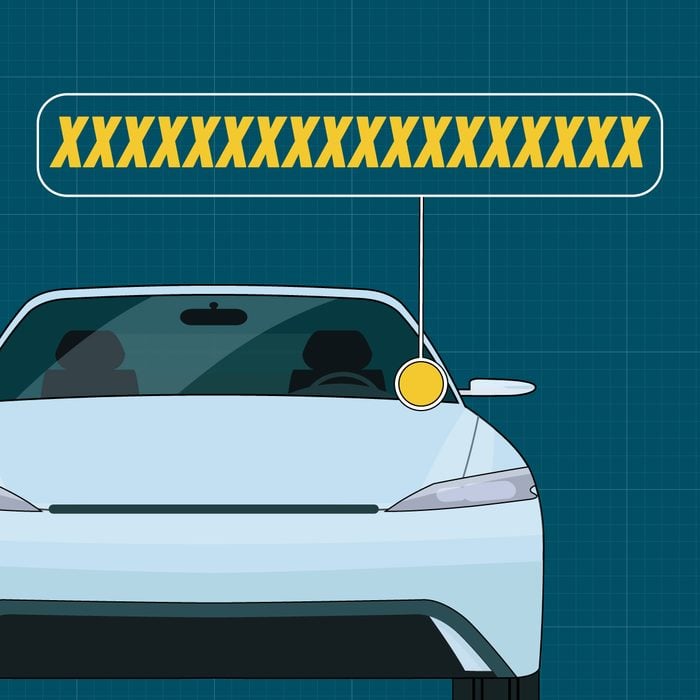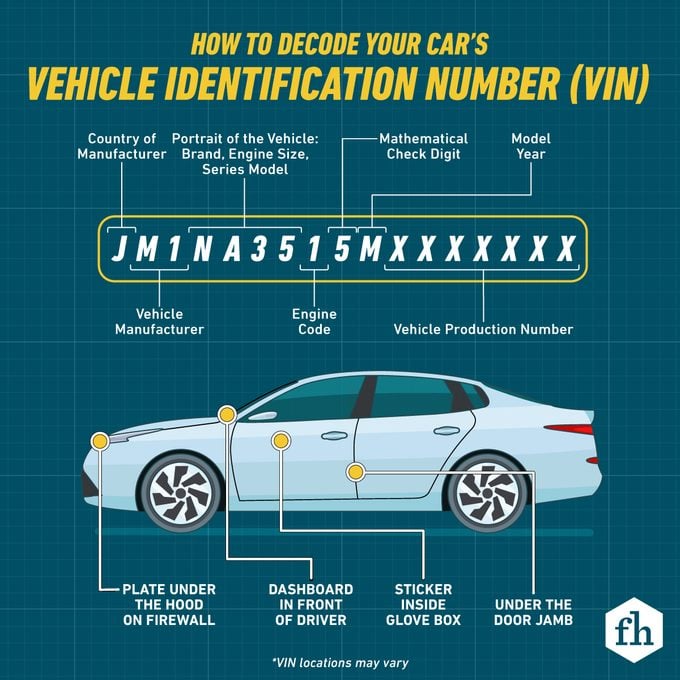How To Decode Your Car’s Vehicle Identification Number
Updated: Apr. 04, 2024

Your car's Vehicle Identification Number (VIN for short) is unique to your vehicle. Those 17 characters contain the secrets to everything in your car, truck or SUV.
Though your car was built on an assembly line with hundreds of other substantially identical vehicles, it is indeed unique. It has a Vehicle Identification Number (VIN) that will never be shared with another car, and that number contains important details about your ride.
The VIN indicates the year, model, engine and other options the car came with, information critical to getting the right parts for repairs and maintenance. In my experience from working in car factories and a repair shop, the VIN is the key to everything within a car or truck.
On This Page
About the Expert
Chris Tonn is a freelance automotive journalist in Columbus, Ohio. He writes about auto news and technology, new car reviews and history. He worked as a service writer at a major repair shop chain and does almost all his own auto repair work at home.
What Is a VIN Number?

It’s a government-mandated serial numbering system that implements several International Organization for Standardization (ISO) standards, as well as National Highway Traffic Safety Administration (NHTSA) requirements.
This set of 17 characters, required on all vehicles since 1981, identifies cars, trucks and other motor vehicles. The code reveals exactly when and where the vehicle was made, and by whom. In many cases, it also indicates the options and features on the vehicle.
Most people only encounter the VIN when renewing the vehicle registration or contacting an insurance company, but the characters within a VIN tell a car owner so much more. The critical numbers and letters help you buy the right replacement parts.
Where To Find VIN Number on a Car
Manufacturers place the VIN in several places throughout the vehicle.
Most commonly, you’ll find it on a plate or sticker on the dashboard in front of the driver, visible through the windshield. Newer cars often have a barcode in this spot, too. You might notice your technician scanning the VIN next time you pull in for an oil change.
You may also find it under the door jamb, a plate under the hood on the firewall, or a sticker inside the glove box. I’ve even seen it stamped on the chassis of a vehicle underneath carpet. Some dealerships sell VIN etching onto the glass windows as a security measure.
Why all these places? Theoretically, it makes it harder for nefarious characters to re-sell parts from a stolen vehicle.
What Each Number in a VIN Means
At first glance, a VIN looks someone at the factory fell on a keyboard when typing out a serial number plate. But as you dig deeper, you’ll find meaning in each of the 17 characters.
I’ll list part of the VIN of my cherished classic car, a 1991 Mazda Miata I’ve owned for more than two decades, as an example. I’ve hidden some key characters with an X. I don’t want anybody doing anything illegal with my insurance or registration. You never know with the internet.
Here it is: JM1NA3515MXXXXXXX
The first three characters are known as the World Manufacturer Identifier. These identify what company built the car, and country where it was manufactured.
The first character typically indicates the country:
1: United States;
2: Canada;
3: Mexico;
J: Japan;
K: South Korea or Israel;
S: United Kingdom or East Germany;
W: Germany;
Z: Italy or Slovenia.
The next two characters identify the manufacturer. A VIN with 1F is a U.S.-manufactured Ford, while JN is a Japan-manufactured Nissan. You can find tables online to help with the World Manufacturer Identifier, including the NHTSA VIN Decoder website.
In my Miata, JM1 is the World Manufacturer Identifier J for Japan, M for Mazda and 1 means it’s a Mazda car, not a truck, which might be a JM2.
The next six characters describe the vehicle itself, according to codes known to each manufacturer. These can indicate a number of options installed on the car, including what kind of chassis. Some trucks may be offered in different wheelbases depending on the length of the bed or cab. That’s something possibly indicated by these characters.
What Digit of the VIN is the Engine Code?
Some automakers use the eighth character of the VIN for an engine code. This is important on vehicles offered with different engines.
My Miata was only produced with a single type of engine in 1991. But I also own a 2006 Chevrolet Trailblazer, which was offered with two engines. The eighth character in the Trailblazer’s VIN is an S for the 4.2-liter inline six-cylinder engine. Another engine offered that year was a 5.3-liter V-8, which would be VIN code P.
Enthusiasts often discuss their vehicles by portions of their chassis codes as a point of reference with other car fanatics. It’s helpful when trying to determine what parts might work on your favorite car.
In the case of my Miata, the fourth and fifth characters of the VIN are NA. A search of any number of enthusiast forums and social media outlets for an “NA Miata” will yield millions of results, where fans will debate the various merits of the vehicle.
The 10th digit is possibly one of the most important to identify. This is the model year indicator.
These started with the letter A in 1980, moving forward each year. So B was 1981, and so on. The letters O, I, Z and Q are excluded, as well as the number zero because they might be confused with other numbers or letters. For my Miata, the model year indicator is M, meaning it was built in the 1991 model year.
In 2001, letters were replaced with numbers, making a model year 2001 car a 1. In 2010, letters started up again with “A” as it is unlikely anyone would confuse a model year 2010 car with one built in 1980.
After that, the last seven characters are unique to each car. In some cases, the 11th character indicates the manufacturing facility where the car was built, but this isn’t standard across the industry. The last digits typically advance one by one according to the date the vehicle was produced.
